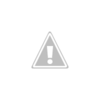Since being afflicted by this near fatal disease that brings us all together on this forum, I have been consumed with the need to gather information on the malady which will someday eradicate the interior of my wallet if not stopped.
To this end, I have seen and/or heard from various sources (NOT including THR) that the use of "Powder Dispensers" like the one pictured below:

Could cause an explosion and/or fire due to sparks generated by the dispenser, possibly by static electricity.
Being a skeptic and only falling for internet hoaxes once or twice per year I'm not quite buying into this myth/fact yet, but on the other hand I'd rather not wind up looking like Wile E. Coyote on a bad day either.
One would think (possibly incorrectly) that if a powder dispenser is built with a safety margin for smokeless that it should also be reasonably safe for black. If not you would think that the attorneys for Lee, RCBS etc. would be howling from the highest window to put warnings in 97 different languages all over the product and its packaging right???
The question is: Am I courting certain destruction if I continue to use this powder dispenser or is this just the opinion of another wanna-be "Expert" tryin to impress everybody on the www.
To this end, I have seen and/or heard from various sources (NOT including THR) that the use of "Powder Dispensers" like the one pictured below:

Could cause an explosion and/or fire due to sparks generated by the dispenser, possibly by static electricity.
Being a skeptic and only falling for internet hoaxes once or twice per year I'm not quite buying into this myth/fact yet, but on the other hand I'd rather not wind up looking like Wile E. Coyote on a bad day either.
One would think (possibly incorrectly) that if a powder dispenser is built with a safety margin for smokeless that it should also be reasonably safe for black. If not you would think that the attorneys for Lee, RCBS etc. would be howling from the highest window to put warnings in 97 different languages all over the product and its packaging right???
The question is: Am I courting certain destruction if I continue to use this powder dispenser or is this just the opinion of another wanna-be "Expert" tryin to impress everybody on the www.



